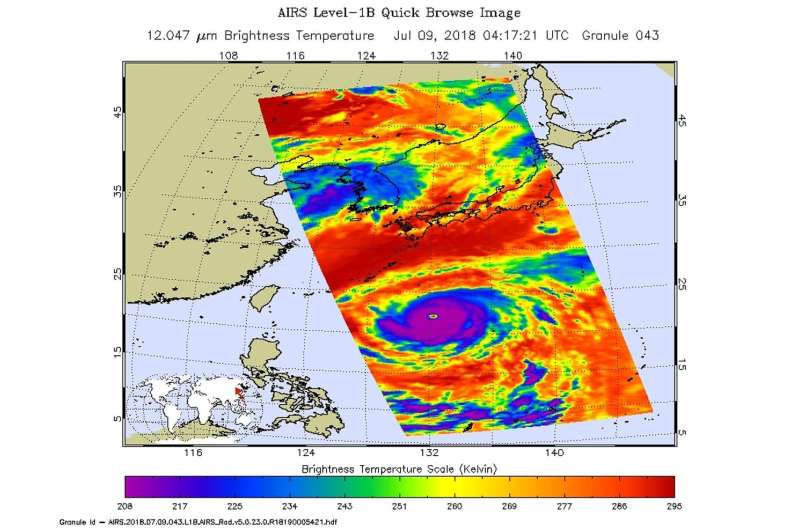NASA sees a well-organized typhoon Maria

Maria appeared as a well-organized storm on infrared NASA satellite imagery on July 9. Maria has fluctuated between typhoon and super typhoon strength and was a typhoon when NASA's Aqua satellite passed overhead.
On July 7, Maria was at typhoon status. On July 8, Maria regained super typhoon status as it continued tracking over the open waters of the Northwestern Pacific Ocean. On July 9, Maria weakened again and was classified as a typhoon.
NASA's Aqua satellite passed over Maria on July 9 at 2:29 a.m. EDT (0629 UTC) and analyzed the storm in infrared light. Infrared light provides temperature data and that's important when trying to understand how strong storms can be. The higher the cloud tops, the colder and the stronger they are.
AIRS found coldest cloud top temperatures in a wide and powerful band of thunderstorms around the storm's 30 nautical-mile-wide eye. Those temperatures were as cold as minus 63 degrees Fahrenheit (minus 53 degrees Celsius). Storms with cloud top temperatures that cold have the capability to produce heavy rainfall.
On July 9 at 11 a.m. EDT (1500 UTC), Maria's maximum sustained winds were near 143.8 mph (125 knots/231.5 kph). Maria was centered near 23.2 degrees north latitude and 129.5 degrees east longitude, about 255 nautical miles south-southeast of Kadena Air Base, Okinawa, Japan. Maria was moving to the west-northwest at 17.2 mph (15 knots/27.7 kph).
The Joint Typhoon Warning Center forecast predicts Maria will maintain typhoon status and continue moving on a west-northwesterly track over the next several days. Maria is forecast to pass between the Japan islands of Okinawa and Ishigaki Island, then just north of Taiwan and make landfall in southeastern China on July 11.
Provided by NASA's Goddard Space Flight Center





















